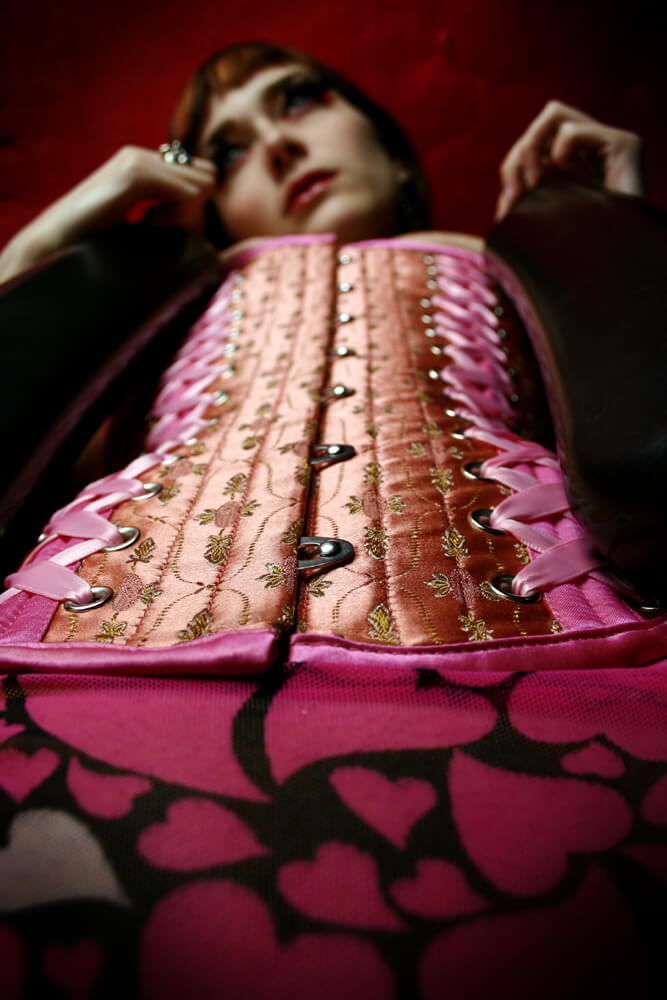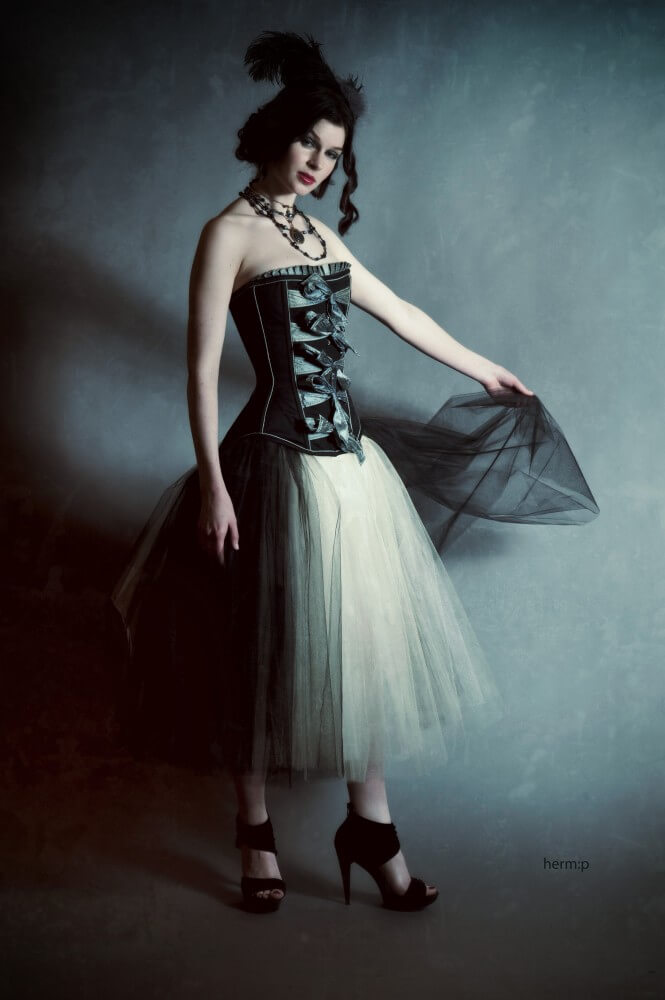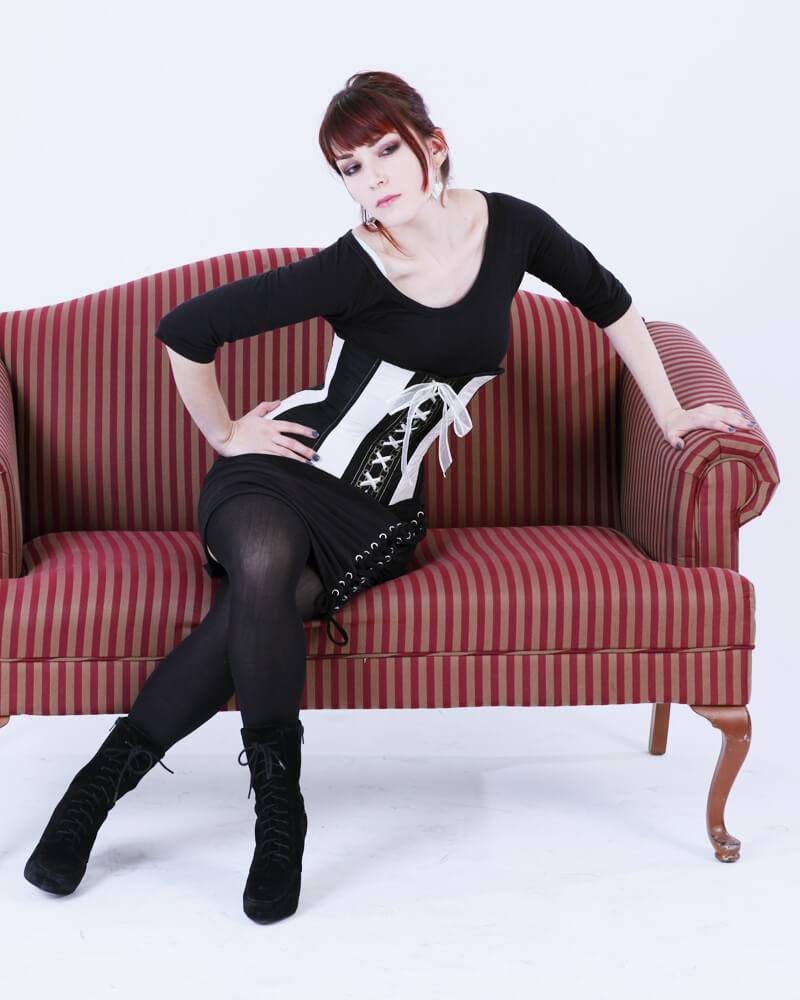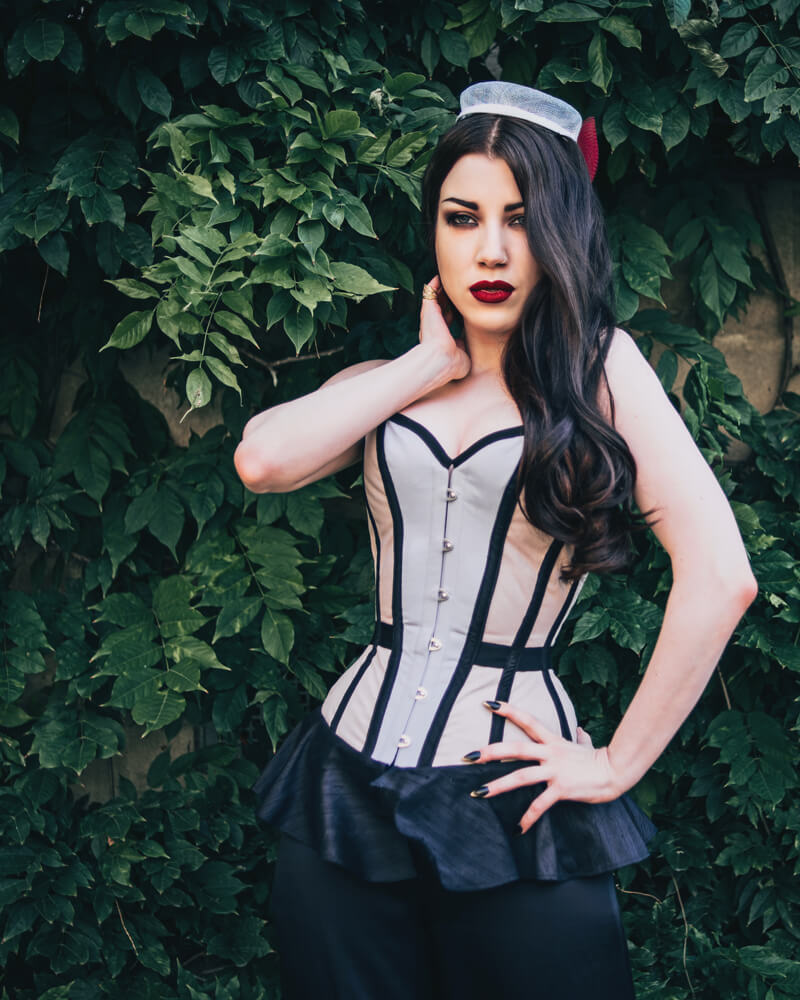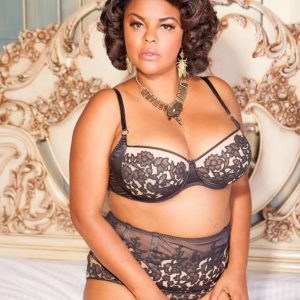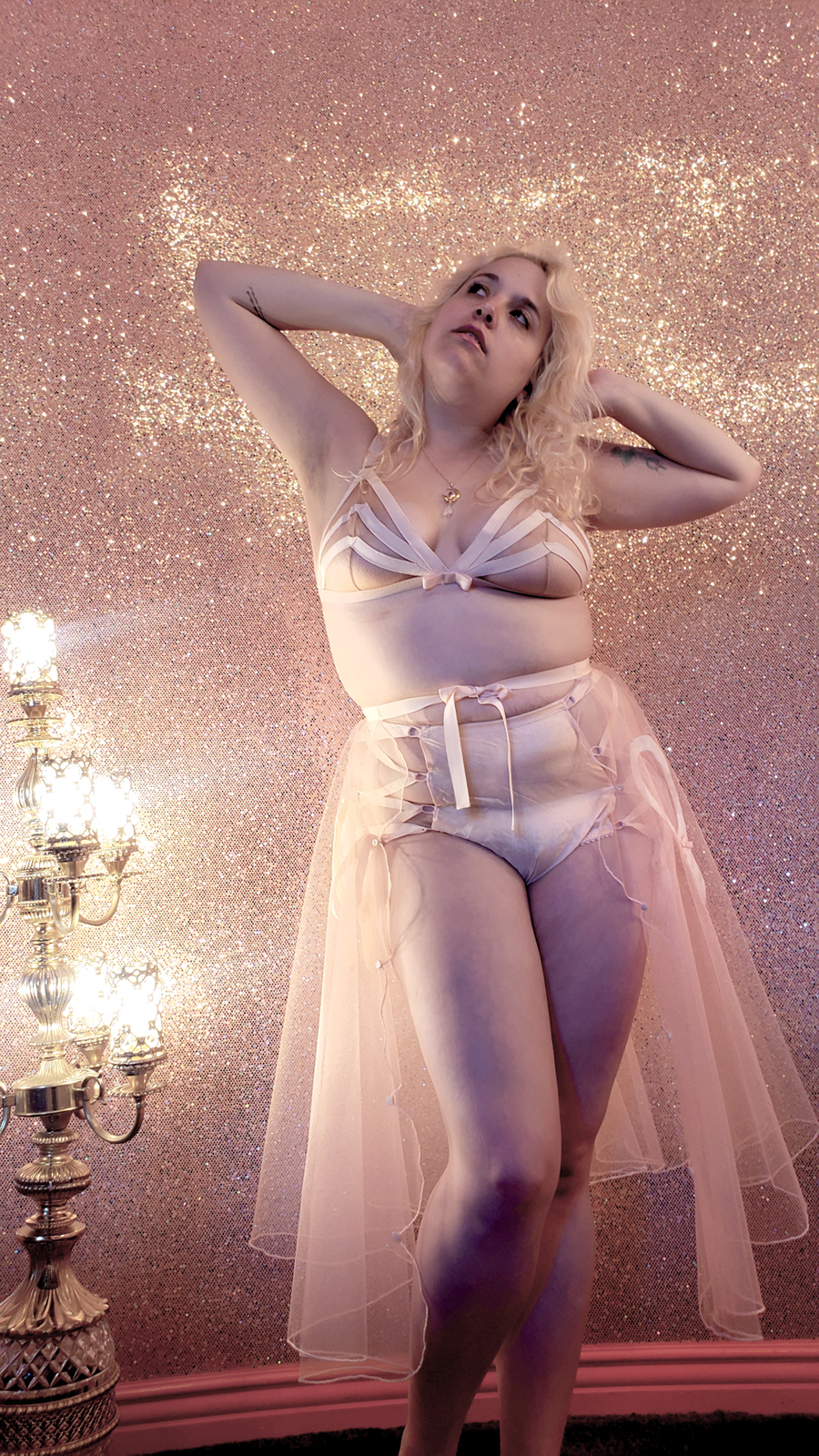The Anatomy of a Corset: Parts & Terms
Corsets are complex beasts! Their creation requires not only exacting techniques, but some specialized components as well. Today I'm going to discuss the basic elements of a corset in their most common forms. As corsets have such a long history and can be assembled with a range of techniques, there are plenty of variations on these parts. Here I'll be focusing on the most widely used types. Understanding basic corset construction can be very helpful when corset shopping.
Hardware
Busk: A specialty closure that is comprised of metal loops and studs, mounted to a pair of steel bones. This has become the standard front closure for modern corsets. Several variations of busk are available, such as the curved "spoon busk." Early busks only stabilized the flat front of a corset, rather than serving as a closure. Though having a separating busk creates a much quicker (un)dressing experience than closed front, it is critically important to loosen the back lacing before unfastening the busk in front.
Bones: Thin slats responsible for maintaining the vertical tension of a corset. Bones do not create shape, but support it. Most bones are either "flats," flat pieces of spring steel, or "spirals," which resemble a flattened coil and have more flexibility. Though high quality plastic bones are available, including "synthetic whalebone," the type of plastic bones used in mass-produced corsets are generally flimsy and warp easily.
Grommets / Eyelets: Metal rings that strengthen the holes through which the corset lacing is threaded. Corsetry requires "two part gromments," the main part being a shaft with a rounded flange, which, on the other side of the hole, grasps a flat washer.
Construction
Binding: A strip of fabric that encases the top and bottom edges of a corset. Because of their thickness, created by the layers of construction, corsets rarely have a turned-under hem as would other garments.
Bone casing: An additional layer of fabric that is topstitched in place to create a bone channel.
Bone channel: The path between layers of fabric that holds each bone in place. Bone channels often, but not always, follow seamlines.
Panel: Each piece (or stack of pieces) of fabric, cut to a specific shape to create fit. Most corsets commonly have six panels on each side of the body.
Waist tape / waist stay: A sturdy "tape" (non-decorative ribbon) that reinforces the waist to minimize stretching.
The Lacing Area
"Bunny ears": The most popular way of lacing a corset creates loops at the waist level, to provide greater leverage where it is most needed. This is sometimes called the "bunny ears" method of lacing and the loops themselves are the bunny ears in question. Ideally, the waist loops should create an extra cross-over, such that pulling on the lower portion of the loop tightens the top, and vice versa. This provides additional support to the area of greatest strain.
Lacing gap: The space between edges of the center back panels. A lacing gap allows for flexibility in fit, though some may choose to lace their corsets closed. A standard lacing gap is 2"; larger sizes may wear their corsets with a gap of up to roughly 4".
Modesty Panel: An extra piece of fabric that sits behind the laces. A modesty panel serves several purposes, but is most commonly desired to cover the skin crease created by tightening a corset.
Fabrics
Coutil: A specialty fabric designed specifically for corsetmaking --- tightly woven with a minimum of stretch. There are various types of coutil, including the classic herringbone, spot broché, and brocades. Coutil can be used as a fashion fabric as well as a strength layer, or in a single-layer corset.
Fashion fabric: The outer fabric of a corset, which need not be as strong as the inner layers. Fashion fabrics may be very sturdy or delicate and chosen purely for their aesthetic value, be it color, pattern, or texture.
Strength layer: The "load bearing" layer of a corset, if you will. Coutil is a popular choice for this layer. Other fabrics such as canvas, duck, and poplin are also often used. This is particularly the case in America, where import fees can make good quality coutil cost-prohibitive.
Lining: The layer closest to the skin. Some corsetmakers may also refer to their "strength layer" as the lining. For others, the "lining" would be an additional layer that protects the strength layer from your body's oils and sweat.
Interfacing: A lightweight layer of specialty fabric that is heat-fused to the fashion fabric to stabilize it. With the use of a dual-sided interfacing called Wonder-Under, a fashion fabric may also be fused directly to a strength layer fabric for maximum reinforcement.
Do you have other corset construction questions that have been puzzling you? If you need answers to help you in your corset shopping, let me know in the comments below!





